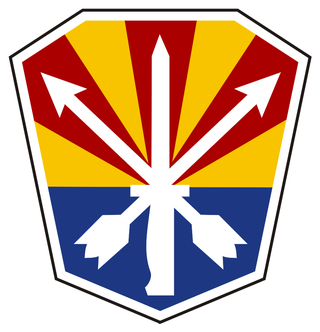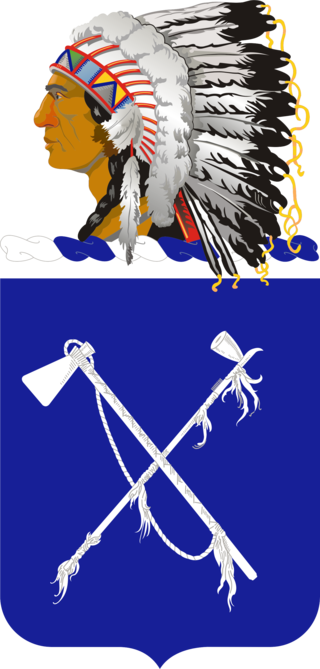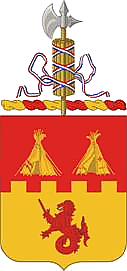
The Oklahoma National Guard, a division of the Oklahoma Military Department, is the component of the United States National Guard in the U.S. state of Oklahoma. It comprises both Army (OKARNG) and Air (OKANG) National Guard components. The Governor of Oklahoma is Commander-in-Chief of the Oklahoma National Guard when not on federal active duty. The state's highest-ranking military commander, the Adjutant General of Oklahoma (TAG), serves as the military head of the Guard and is second only to the Governor. The TAG is served by Assistant Adjutants General, all brigadier generals, from the OKARNG and OKANG. The two components each have a senior noncommissioned officer, State Command Sergeant Major for Army and State Command Chief Master Sergeant for Air. The TAG is also served by his Director of the Joint Staff or Chief of Staff, who has direct oversight of the state's full-time National Guard military personnel and civilian employees.

The Arizona Army National Guard is a component of the United States Army and the United States National Guard. National coordination of various state National Guard units are maintained through the National Guard Bureau.

The 45th Infantry Brigade Combat Team ("Thunderbird") is a modular infantry brigade combat team of the United States Army headquartered in Norman, Oklahoma. It is a part of the Oklahoma Army National Guard.

The Oklahoma Army National Guard is the Army National Guard component of the Oklahoma National Guard. The Commander in Chief of the Oklahoma National Guard is the Governor of Oklahoma, who appoints the State Adjutant General (TAG), a Major General from either Army or Air. Currently, the TAG is Brig. Gen. Thomas H. Mancino. The previous TAG was Maj. Gen. Michael Thompson.

The 197th Field Artillery Brigade is a field artillery brigade of the New Hampshire Army National Guard.

The 169th Field Artillery Brigade is an artillery brigade in the US Army National Guard. It is part of the Colorado Army National Guard.

The 179th Infantry Regiment ("Tomahawks") is an infantry regiment of the United States Army's National Guard.

The 157th Field Artillery Regiment (First Colorado) is a United States Army Regimental System field artillery parent regiment of the United States Army National Guard, represented in the Colorado Army National Guard by the 3rd Battalion, 157th Field Artillery Regiment, part of the 169th Field Artillery Brigade at Colorado Springs.

The 133rd Field Artillery Regiment is a parent field artillery regiment of the United States Army National Guard. It is currently represented in the Texas Army National Guard by the 1st, 3rd, and 4th Battalions.

The 158th Field Artillery Regiment is a Field Artillery regiment of the Army National Guard.

The 1st Squadron, 180th Cavalry Regiment is a formation of the United States Army, headquartered in McAlester, Oklahoma. It is a part of the 45th Infantry Brigade Combat Team, Oklahoma Army National Guard and is one of the oldest units in the brigade.
The 202nd Air Defense Artillery was an antiaircraft regiment of the Illinois Army National Guard.

The 1st Battalion, 160th Field Artillery Regiment is headquartered in Chandler, Oklahoma. It is a part of the 45th Infantry Brigade Combat Team, Oklahoma Army National Guard.

The 189th Regiment (Regional Training Institute) is a training regiment of the Oklahoma Army National Guard. The Regiment only retains its affiliation with the Field Artillery branch for purposes of history and lineage and is the core cadre and leadership of the Oklahoma Regional Training Institute (OKRTI). Its parent unit is the Joint Force Headquarters of the Oklahoma Army National Guard.

The 112th Field Artillery Regiment is a Field Artillery Branch regiment of the New Jersey Army National Guard first formed in April 1917. In December 1941, it was the last field artillery regiment in the U.S. Army to convert from horse-drawn to truck-drawn howitzers.
The 118th Field Artillery Regiment is a field artillery regiment of the Georgia Army National Guard. The regiment's 1st Battalion is the cannon battalion assigned to the 48th Infantry Brigade Combat Team. It is one of several National Guard units with colonial roots and campaign credit for the War of 1812.
The 122nd Field Artillery Regiment is a field artillery regiment of the Illinois Army National Guard. The regiment's 2nd Battalion is the cannon battalion assigned to the 33rd Infantry Brigade Combat Team.

The 142nd Field Artillery Brigade is a field artillery brigade in the Arkansas Army National Guard (ARNG). The 142nd is currently under administrative control of the 29th Infantry Division.

The 123rd Field Artillery Regiment is an active Field Artillery Branch regiment of the Illinois Army National Guard. The regiment's 2nd Battalion last served as a towed, 155mm cannon battalion assigned to the 169th Field Artillery Brigade, though administratively under the control of the 65th Troop Command.

I Corps Artillery was a United States Army division-level command active during World War I, World War II, the Korean War and the Cold War. Today the 65th Field Artillery Brigade continues the lineage of I Corps Artillery.




















